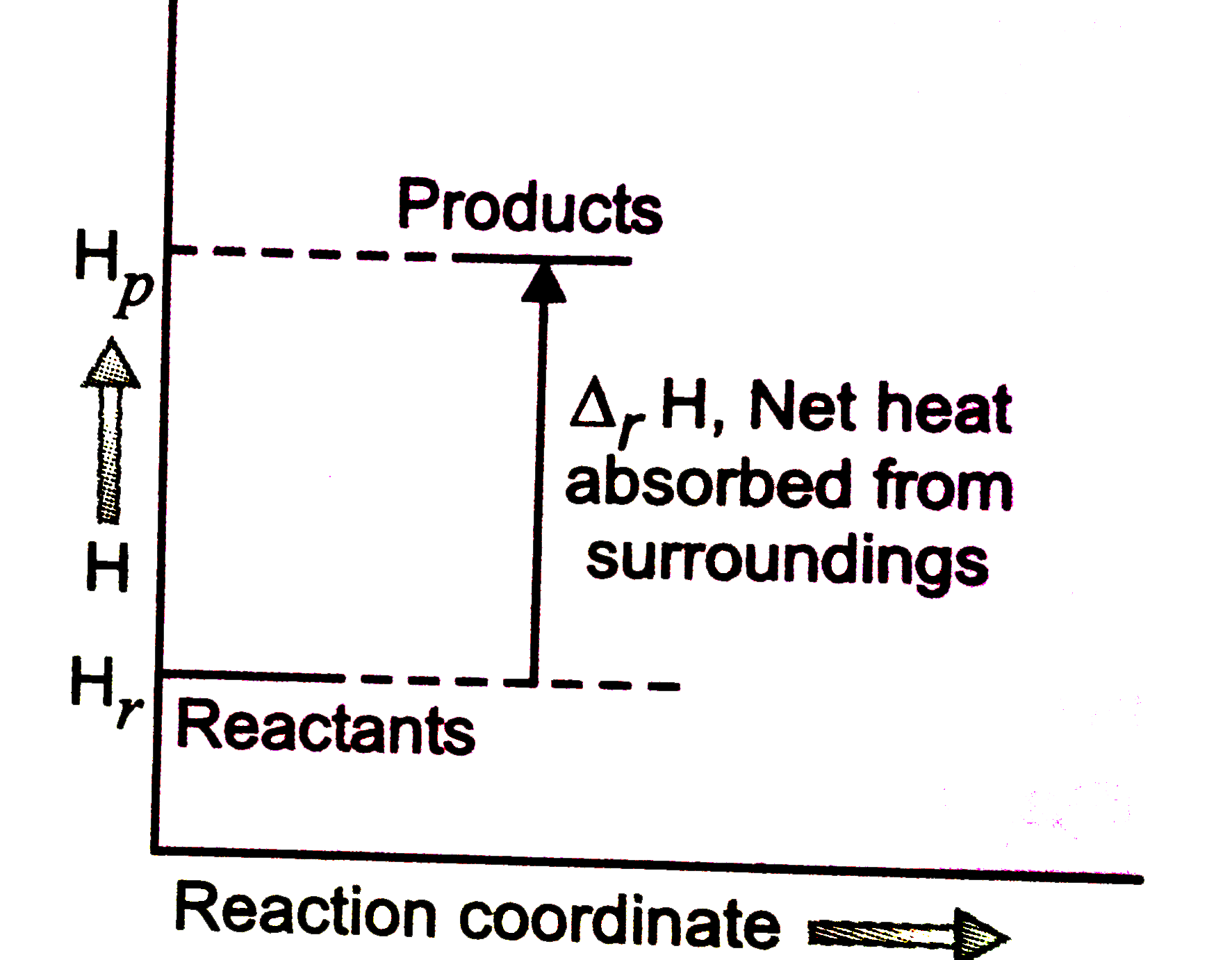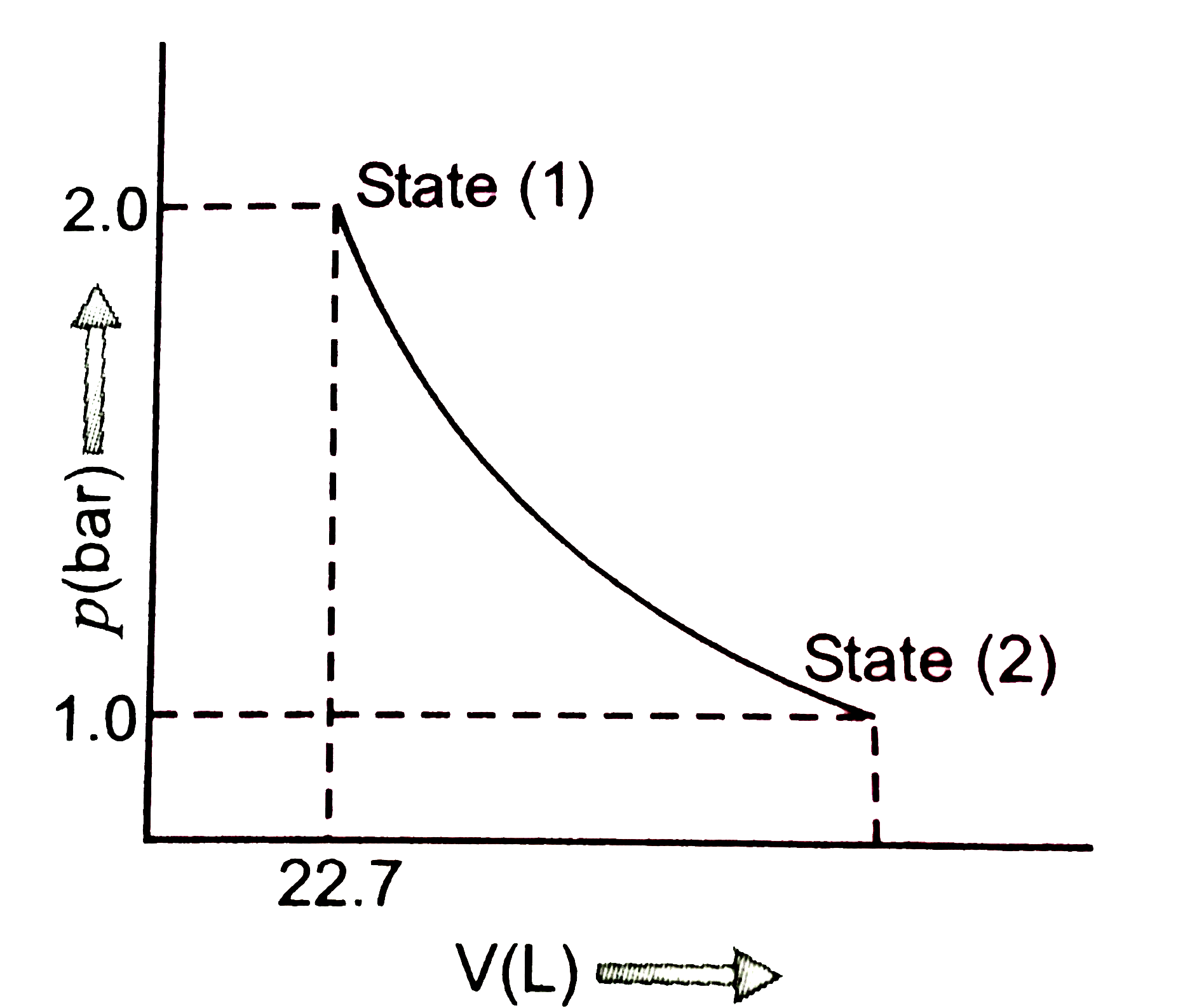Complete Solutions to NCERT EXEMPLAR PROBLEMS WITH ANSWERS, HINTS AND SOLUTIONS( SHORT ANSWER QUESTIONS) of chapter THERMODYNAMICS of Class 11 book with complete answers and questions
| Class 11 | CHEMISTRY |
| Chapter | THERMODYNAMICS |
| PRADEEP | NCERT EXEMPLAR PROBLEMS WITH ANSWERS, HINTS AND SOLUTIONS( SHORT ANSWER QUESTIONS) |
| Number Of Questions | 31 |
| Academic Year | 2023-24 |
18.0 g of water completely vaporises at `100^(@)C` and 1 bar pressure and the enthalpy change in the process is `40.79 kJ mol^(-1)`. What will be the enthalpy change for vaporising two moles of water under the same conditions ? What is the standard enthalpy of vaporisation for water ?
View SolutionOne mole of acetone requires less heat to vaporise than 1 mole of water. Which of the two liquids has higher enthalpy of vaporisation ?
View SolutionStandard molar enthalpy of formation, `Delta_(f) H^(Θ)` is just a special case of enthalpy of reaction, `Delta_(r) H^(Θ)`. Is the `Delta_(r) H^(Θ)` for the following reaction same as `Delta_(f) H^(Θ)`? Given reason for your answer.
`CaO (s) + CO_(2) (g) rarr CaCO_(3) (s) , Delta_(f) H^(Θ) = - 178.3 kJ mol^(-1)`
View SolutionThe value of `Delta_(f) H^(Θ)` for `NH_(3)` is `-91.8 kJ mol^(-1)`. Calculate enthalpy change for the following reaction.
`2NH_(3) (g) rarr N_(2) (g) + 3H_(2) (g)`
View SolutionEnthalpy is an extensive property. In general, if enthalpy of an overall reaction `A rarr B` along one route is `Delta_(r) H " and Delta_(r) H_(1), Delta_(r) H_(2), Delta_(r) H_(3)`..... Represent enthalpies of intermediate reactions leading to product B. What will be the relation between `Delta_(r)H` overall reaction and `Delta_(r)H_(1), Delta_(r)H_(2)`... etc for intermediate reaction.
View SolutionThe enthaply of atomisation for the reaction : `CH_(4)(g) to C(g) + 4 H(g)` is `1665 kJ "mol"^(-1)`.What is the bond enthalpy of C-H bond?
View SolutionUse the following data to calculate `Delta_("lattice")H^(@)` for NaBr. `Delta_("sub")H^(@)` for sodium metal = `108.4 kJ "mol"^(-1)`.Ionization enthalpy of sodium = 496`kJ "mol"^(-1)` Electron gain enthalpy of bromine = `-325 kJ "mol"^(-1)`.Bond dissociation enthalpy of bromine = 192 kJ ` "mol"^(-1)`. `Delta_(f)^(H^(@))` for NaBr (s) = `-360.1 kJ "mol"^(-1)`.
View SolutionGiven that `DeltaH=0` for mixing of two gases. Explain whether the diffusion of these gases into each other in a closed container is a spontaneous process or not?
View SolutionHeat has randomising influence on a system and temperature is the measure of average chaotic motion of particles in the system.Write the mathematical relation which relates these three parameters.
View SolutionIncrease in enthalpy of the surroundings is equal to decrease in enthalpy of the system. Will the temperature of system and surroundings be the same when they are in thermal equilibrium?
View SolutionAt 298 K, `K_(p)` for the reaction : `N_(2)O_(4)(g) iff 2NO_(2)(g)` is 0.98. Predict whether the reaction is spontaneous or not.
View SolutionA sample of 1.0 mole of a monoatomic ideal gas is taken through a cyclic process of expansion and compression as shown in figure. What will be the value of`DeltaH` for the cycle as a whole ?

View SolutionThe standard molar entropy of `H_(2)O(l)` is `70 J K^(-1) "mol"^(-1)`.Will the standard molar entropy of `H_(2)O(s)` be more or less than `70 J K^(-1) "mol"^(-1)`?
View SolutionIdentify the state functions and path functions out of the following:
enthalpy, entropy, heat, temperature, work, free energy.
View SolutionThe molar enthalpy of vapourisation of acetone is less than that of water.Why?
View SolutionWhich quantity out of `Delta_(r)G` or `Delta_(r)G^(@)` will be zero at equilibrium?
View SolutionPredict the change in internal energy for an isolated system at constant volume.
View SolutionAlthough heat is a path function but heat absorbed by the system under certain specific conditions is independent of path. What are those conditions? Explain.
View SolutionExpansion of a gas in vaccum is called free expansion.Calculate the work done and the change in internal energy when 1 litre of ideal gas expands isothermally into vaccum until its total volume is 5 litre?
View SolutionHeat capacity `(C_(p))` is an extensive property but specific heat (C) is an intensive property.What will be the relation between `C_(p)` and C for 1 mol of water?
View SolutionThe difference between `C_(p)` and `C_(v)` can be derived using the empirical relation H = U + pV. Calculate the difference between `C_(p)` and `C_(v)` for 10 moles of an ideal gas.
View SolutionIf the combustion of 1 g of graphite produces -20.7 kJ of heat, what will be molar enthalpy change? Give the significance of sign also.
View SolutionThe net enthalpy change of a reaction is the amount of energy required to break all the bonds in reactant molecules minus amount of energy required to form all the bonds in the product molecules.What will be the enthalpy change for the following reaction.
`H_(2)(g) + Br_(2)(g) to 2HBr(g)`
Given that bond energy of `H_(2), Br_(2)` and HBr is 435 kJ `mol^(-1)`, 192 kJ `mol^(-1)` and `368 kJ mol^(-1)` respectively.
View SolutionThe enthalpy of vaporisation of ` C CI_(4)` is `30.5 kJ "mol"^(-1)`.Calculate the heat required for the vapourisation of 284 g of `C CI_(4)` at constant pressure. (Molar mass of ` C CI_(4) = 154u`).
View SolutionThe enthalpy of reaction for thr equation
`2H_2(g) +O_2(g) rarr 2H_2O(l)` is `DeltaH^@=-572kj/mol`
what will be the standard enthalpy for the formation of `H_2O`(l)?
View SolutionWhat will be the work done on an ideal gas enclosed in a cylinder, when it is compressed by a constant external pressure, `p_(ext) ` in a single step as shown in Figure. Explain graphically.

View SolutionHow will you calculate work done on an ideal gas in a compression, when change in pressure is carried out in infinite steps?
View SolutionRepresent the potential energy/enthalpy change in the following process graphically
(a) Throwing a stone from the ground to roof.
(b) `1/2H_(2)(g) + 1/2Cl_(2)(g)` `HCl(g) Delta_(r)H^(@) = -93.2 kJ mol^(-1)`
In which of the process potential energy/enthalpy change in contributing factor to the spontaneity?
View SolutionEnthalpy diagram for a particular reaction is given in the figure, below. Is it possible to decide spontaneity of a reaction from given diagram ? Explain .

View Solution1.0 mol of a monoatomic ideal gas isexpanded from state (1) to state (2) as shown in the adjoining figure. Calculate the work done for the expansion of gas from state ( 1) to state (2) at 298 K

View SolutionAn ideal gas is allowed to expand against a constant pressure of 2 bar from 10 L to 50 L in one step. The amount of work done by the gas is x. if the same expansion were carried out reversible, what is the relation of work done with the earlier case?
View Solution
NCERT EXEMPLAR PROBLEMS WITH ANSWERS, HINTS AND SOLUTIONS( SHORT ANSWER QUESTIONS) questions and complete solutions for chapter THERMODYNAMICS of PRADEEP CHEMISTRY (HINGLISH) of Class 11
All Exercises from PRADEEP Class 11 CHEMISTRY THERMODYNAMICS
- 33390
- ADDITIONAL QUESTIONS(VERY SHORT ANSWER QUESTIONS)
- ADVANCED PROBLEMS (FOR COMPETITIONS)
- ASSERTION AND REACTION TYPES QUESTIONS
- ASSERTION - REASON TYPE QUESTIONS (TYPE 1)
- ASSERTION - REASON TYPE QUESTIONS (TYPE 2)
- COMPETITION FOCUS (JEE ( main andAdvanced ) /Medical Entrance Special)
- Comprehension 1
- Comprehension 2
- Comprehension 3
- Comprehension 4
- CONCEPTUAL QUESTIONS( I. General Introduction andsome basic terms and concepts)
- CONCEPTUAL QUESTIONS( II. First law of thermodynamics)
- CONCEPTUAL QUESTIONS( III.Enthalpy change and its relation with internal energy change)
- CURIOSITY QUESTIONS
- FILL IN THE BLANKS
- INTEGER TYPE QUESTIONS
- LONG ANSWER QUESTIONS
- MATCHING TYPE QUESTIONS
- MULTIPLE CHOICE QUESTION ( BASED ON PRACTICAL CHEMISTRY)
- NCERT EXEMPLAR PROBLEMS WITH ANSWERS, HINTS AND SOLUTIONS( MULTIPLE CHOICE QUESTIONS-I)
- NCERT EXEMPLAR PROBLEMS WITH ANSWERS, HINTS AND SOLUTIONS( MULTIPLE CHOICE QUESTIONS-II)
- NCERT EXEMPLAR PROBLEMS WITH ANSWERS, HINTS AND SOLUTIONS( SHORT ANSWER QUESTIONS)
- NCERT QUESTIONS AND EXERCISES WITH ANSWERS
- NCERT SUPPLEMENTARY EXERCISE
- NUMBERICAL VALUE TYPE QUESTIONS ( in Decimal Notation)
- Problem
- Problem 1
- Problem 10
- Problem 11
- Problem 12
- Problem 2
- Problem 3
- Problem 4
- Problem 5
- Problem 6
- Problem 7
- Problem 8
- Problem 9
- PROBLEM FOR PRACTICE
- PROBLEMS FOR PRACTICE
- Sample Problem 1
- Sample Problem 2
- Sample Problem 3
- Sample Problem 4
- SHORT ANSWER QUESTIONS
- TEST YOUR GRIP( MULTIPLE CHOICE QUESTIONS)